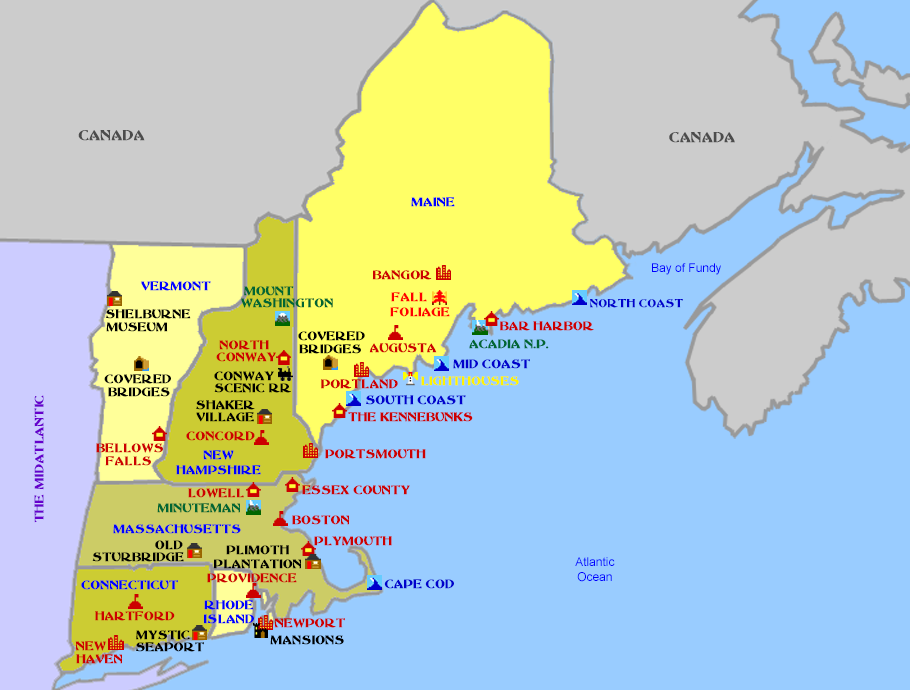
Home >
New England
Click on Map above to explore New England


The name New England goes back to 17th century colonisation by England. King James I gave charters in 1606 to two Virginia Companies allowing them to establish settlements from Cape Fear (now in North Carolina) up to the north of modern day Maine. The charter given to the Virginia Company of Plymouth included the coast of the area now known as New England. The Virginia Company of Plymouth failed to establish any successful settlements and on November 3, 1620 their charter was replaced by a royal charter granted to Plymouth Council for New England whose objective was to colonise and govern the area. The Pilgrim Fathers were sailing across the Atlantic in the Mayflower when the charter was granted aiming to land in the Hudson River area, which was within the area covered by the royal charter. They sighted Cape Cod on November 9 and turned the Mayflower to navigate south towards the Hudson River. After encountering dangerous currents in the waters around the south east corner of Cape Cod, the Mayflower turned back and returned to the northern tip of the cape, near modern day Provincetown. From there, the Pilgrim fathers explored the area, eventually deciding to establish their Plimouth Colony on the mainland, the first successful settlement in New England. The success of the Plimouth Colony attracted other settlers who established other colonies throughout New England. Mergers over the years eventually resulted in the colonies that after the Revolutionary War became US States. By the time of the Revolution, New England had ceased to have any political or administrative significance, but the name lives on even today.
© Mike Elsden 1981 - 2025
The contents of this page may not be reproduced in full or in part without permission